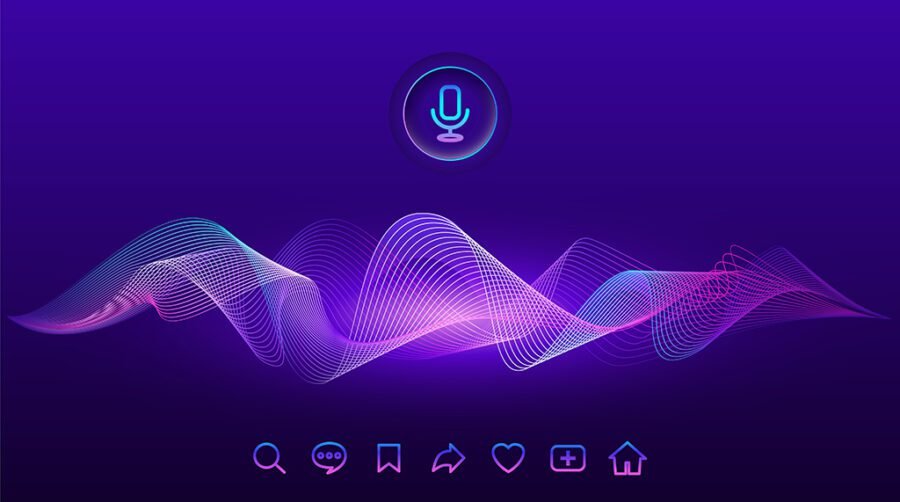Artificial Intelligence (AI) has made a profound impact on nearly every aspect of modern life, and one of its most transformative innovations is AI voice text-to-speech technology. From making devices more accessible to creating new ways for businesses to interact with customers, this technology is reshaping how we communicate with machines and one another. In this blog, we will explore the evolution of AI voice text-to-speech technology, its benefits, applications, and its role in driving forward innovations across industries.
What is AI Voice Text-to-Speech Technology?
AI voice text-to-speech (TTS) technology refers to the ability of machines to convert written text into spoken words using artificial intelligence algorithms. Unlike traditional text-to-speech systems, which rely on pre-recorded human voices or rigid rules, AI-driven TTS systems leverage deep learning models to produce speech that sounds more natural and expressive.
The key advantage of AI-based voice systems is their ability to learn from vast amounts of data, enabling them to mimic human intonations, emotions, and accents. As a result, these systems have become increasingly adept at creating voice outputs that are not only clear and accurate but also nuanced and engaging.
The Evolution of AI Voice Text-to-Speech
Early Beginnings
Voice synthesis has a long history, dating back to the 1950s when researchers began experimenting with machines capable of producing human speech. These early systems were rudimentary, often producing robotic and monotone speech that was far from realistic. Over the years, advances in computing power and linguistic research have led to more refined methods of generating speech.
The Rise of Neural Networks
The real breakthrough in AI voice technology came with the advent of deep learning and neural networks. These systems, which mimic the human brain’s structure, enabled AI models to process vast amounts of text data and generate speech with a level of sophistication previously thought impossible. This innovation allowed machines to generate speech that could express a wide range of emotions and adapt to various linguistic contexts, making AI TTS a powerful tool for communication.
How AI Voice Text-to-Speech is Changing Interaction
AI voice text-to-speech is transforming the way we interact with technology in profound ways. Whether through virtual assistants, customer service applications, or accessibility tools, this technology is enhancing the user experience and enabling new ways of communication.
Accessibility and Inclusion
One of the most significant impacts of AI voice text-to-speech is its ability to make technology more accessible. People with disabilities, particularly those with visual impairments, rely heavily on voice-based systems to interact with devices. With AI-driven TTS, screen readers can now provide more natural-sounding voices, which makes navigating the web or using mobile devices more intuitive for those with visual disabilities.
Additionally, AI voice technology is also beneficial for people with learning disabilities, such as dyslexia. By converting text into speech, it helps individuals better understand written content, making it easier to access educational resources and information.
Enhancing User Experience with Voice Assistants
AI-powered voice assistants, such as Siri, Google Assistant, and Alexa, have revolutionized how we interact with our devices. These assistants use voice recognition and TTS technologies to understand user commands and provide spoken responses. AI voice TTS has allowed these virtual assistants to improve their conversational abilities, offering more personalized and context-aware responses that enhance user engagement.
For example, rather than simply reading off a search result or giving a generic reply, voice assistants can now adjust their tone, speed, and emphasis based on the context of the query. This human-like interaction creates a more seamless and enjoyable user experience.
The Impact on Communication with Machines
As AI TTS technology continues to advance, machines are becoming more capable of carrying on complex conversations with humans. Whether it’s through customer support chatbots or interactive voice response (IVR) systems, AI-driven voice technology can handle a variety of conversational tasks.
These systems are increasingly capable of understanding natural language, allowing users to engage in dialogues that feel more organic. As a result, businesses can provide more efficient and effective customer service, improving response times and customer satisfaction.
Free AI Voice Text-to-Speech Tools: Democratizing Access to Technology
In recent years, free AI voice text-to-speech tools have become widely available, allowing individuals and businesses to access this advanced technology without the need for expensive software or hardware. These tools are often simple to use and require little more than an internet connection to get started.
The availability of free TTS tools has opened up opportunities for people from all walks of life to incorporate AI voice technology into their personal and professional projects. Whether it’s for creating educational content, enhancing accessibility, or improving communication, these tools have made AI-driven speech synthesis accessible to a broader audience.
Applications of AI Voice Text-to-Speech in Various Industries
The versatility of AI voice text-to-speech technology means that it can be applied across a wide range of industries, each benefiting from its unique capabilities.
In Education
In the education sector, AI voice TTS is helping students access information in more engaging and interactive ways. It can read educational content aloud, making it easier for students to absorb information, especially for those with learning difficulties. Moreover, AI-generated voices can be customized to suit various teaching styles and content types, enhancing the learning experience.
In Healthcare
AI-driven TTS is playing a significant role in healthcare by improving patient care and accessibility. For instance, it can be used to read medical instructions or prescriptions to patients, ensuring that they understand their treatment plans. Additionally, AI TTS can assist healthcare professionals by reading patient data aloud during consultations, helping them focus on diagnosis and treatment.
In Entertainment and Media
The entertainment industry is also seeing the benefits of AI voice TTS. For example, audiobooks and podcasts can be generated using AI, allowing for faster production and a more diverse range of voices. Similarly, TTS is being used in video games to create dynamic dialogues and enhance the gaming experience.
AI Marketing: Revolutionizing Customer Engagement
AI voice text-to-speech technology is also making waves in the world of AI marketing. By integrating TTS into marketing campaigns, businesses can create more personalized and engaging experiences for their customers. AI-powered voice assistants can interact with potential customers in real-time, providing them with tailored recommendations and information based on their preferences and behavior.
Moreover, AI-driven TTS can be used to create voice-based advertisements, allowing companies to reach their audiences more directly and conversationally. This method of marketing is particularly effective in an era where consumers are looking for more authentic and human-like interactions with brands.
For example, AI-generated voices can be used in automated calls or chatbots to offer promotions, answer customer inquiries, and guide users through purchasing decisions. This not only improves the customer experience but also increases the efficiency of marketing efforts, allowing businesses to scale their campaigns without the need for additional human resources.
The Future of AI Voice Text-to-Speech Technology
As AI continues to evolve, the potential applications of voice text-to-speech technology are limitless. We are already seeing the integration of AI TTS in new areas such as robotics, augmented reality (AR), and virtual reality (VR). In the future, we may even see AI-driven voices that are capable of understanding and replicating human emotions with greater accuracy, allowing for even more immersive and engaging interactions.
Moreover, as AI voice systems become more advanced, we can expect to see further improvements in language translation, enabling people from different linguistic backgrounds to communicate seamlessly. This could have a transformative impact on global communication, breaking down language barriers and facilitating international collaboration.
Conclusion
AI voice text-to-speech technology has already begun to revolutionize the way we interact with technology, offering significant benefits in accessibility, user experience, and communication. From enhancing virtual assistants to creating new opportunities in education, healthcare, and marketing, AI TTS is rapidly becoming an essential tool for businesses and individuals alike.
As the technology continues to evolve, we can only expect more groundbreaking innovations that will reshape our relationship with machines. Whether you’re looking to improve accessibility, enhance customer engagement, or simply make technology more user-friendly, AI voice text-to-speech is a game-changing technology that is here to stay.











